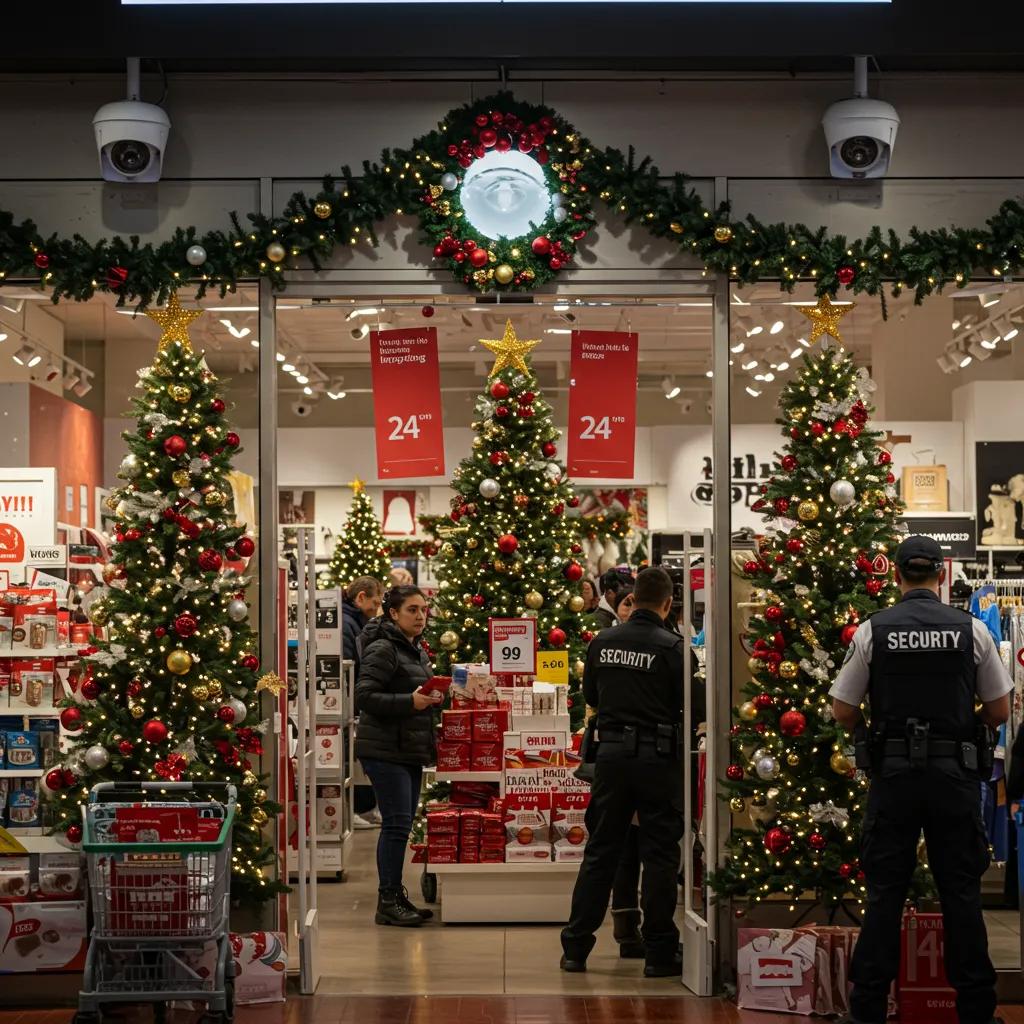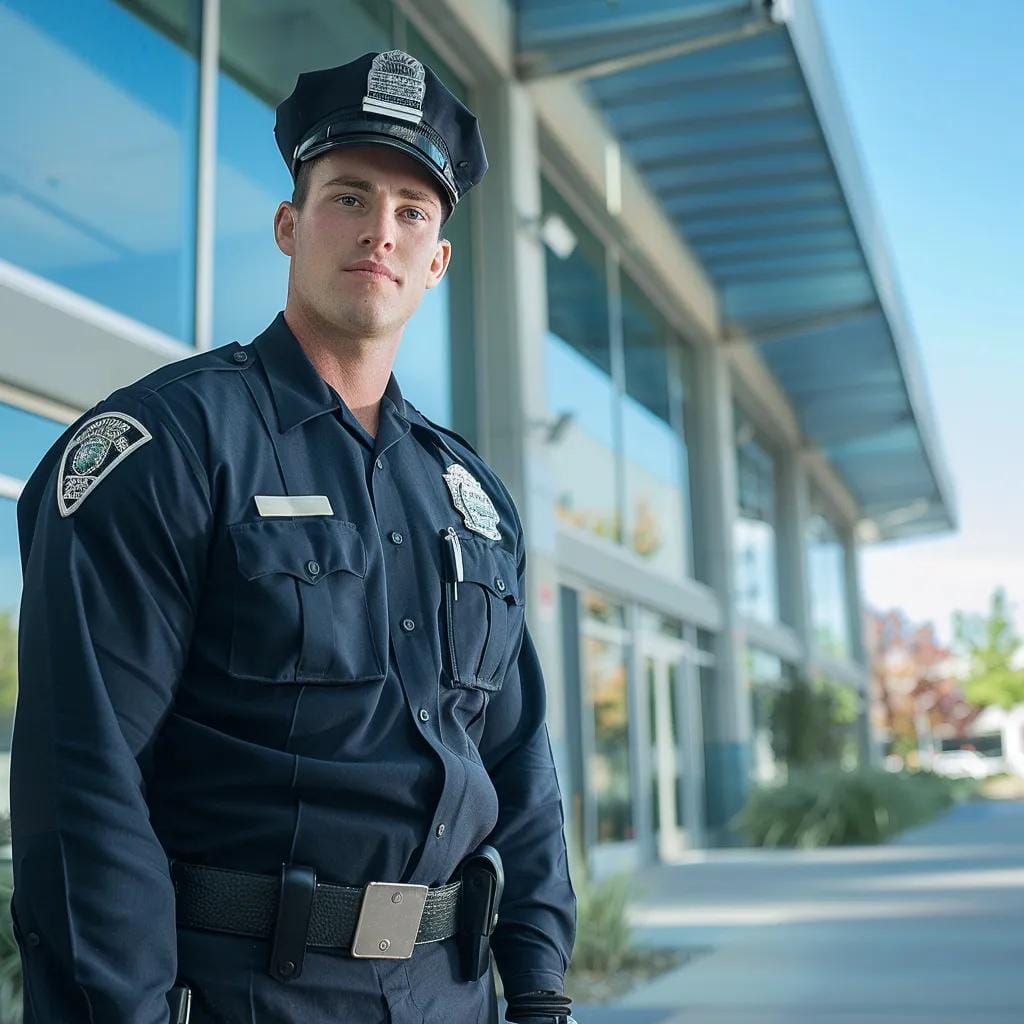The holiday season brings a surge in sales and store traffic—but it also creates prime opportunities for theft, both from opportunistic shoplifters and organized retail crime rings. Protecting your store requires more than just standard security; it demands a proactive, multi-layered strategy designed to handle increased crowds, distracted staff, and high-value merchandise on display.
In this guide, we’ll cover essential holiday security measures—from training your team to spot suspicious behavior and optimizing store layout to leveraging technology like CCTV and electronic article surveillance—so you can minimize losses, keep employees and customers safe, and ensure your holiday revenue stays where it belongs: in your business.
The Ultimate Guide to Holiday Security and Peace of Mind
What Are The Most Common Types Of Seasonal Retail Theft?
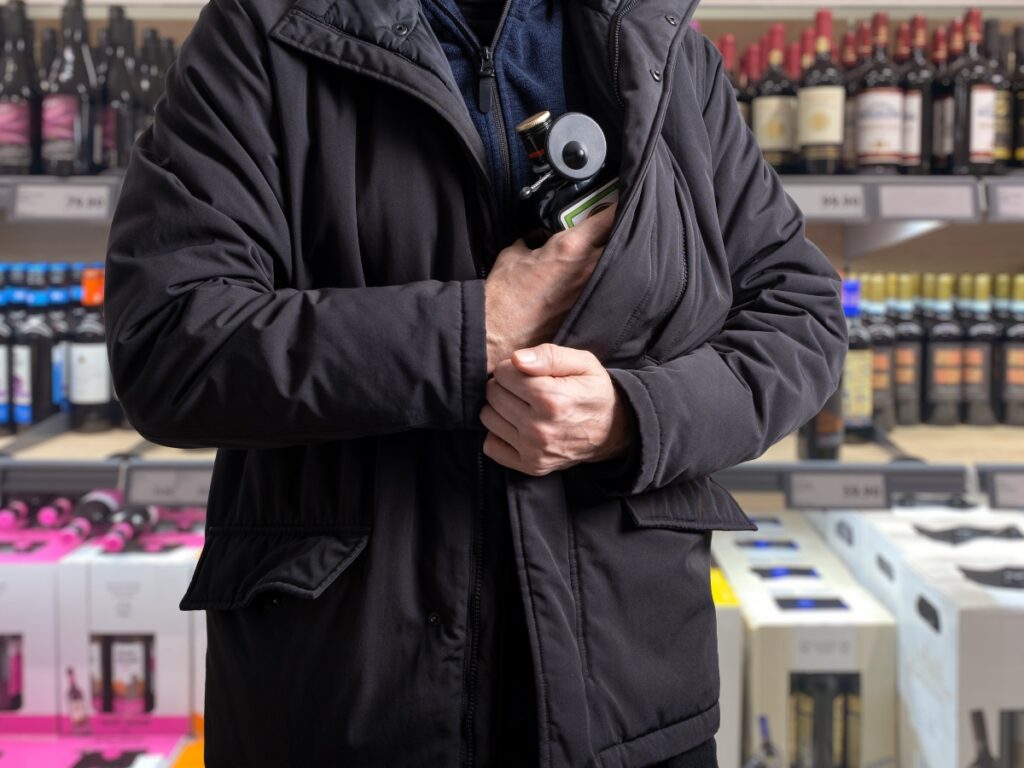
Seasonal retail theft spikes as foot traffic grows and inventories swell. Losses typically stem from three sources that require different controls: opportunistic shoplifting, organized retail crime, and internal employee theft. Knowing how each works lets managers apply the right deterrents instead of one-size-fits-all measures.
| Theft Category | Modus Operandi | Typical Impact |
|---|---|---|
| Shoplifting | Concealing items in bags, strollers, or under clothing | Higher shrink on small, high-margin goods and giftables |
| Organized Retail Crime | Coordinated grab teams, booster bags, fraudulent returns | Large, repeat losses and disrupted operations |
| Employee Theft | Sweethearting, refund fraud, unauthorized discounts | Revenue erosion and damaged team trust |
This snapshot sets the stage for a layered plan that balances visible deterrence with strong back-of-house controls.
How Does Shoplifting Increase During The Holiday Season?
Crowded aisles and long lines create cover for quick concealment. Hot items like cosmetics, electronics accessories, and premium beverages are small, valuable, and easy to hide. Tightening product placement near staffed zones, improving sightlines with lower gondolas, and using mirrors in blind corners reduce concealment opportunities. Queue design matters too. A single, well-lit line with clear camera coverage discourages last-second grabs at impulse racks. EAS tagging on select SKUs and friendly receipt checks at exits further raise the effort required to steal without slowing paying customers.
What Is Organized Retail Crime And How Does It Impact Stores?
Organized retail crime involves crews that plan routes across multiple locations, use diversion tactics, and quickly fence stolen goods online. Beyond inventory loss, these incidents can stress staff and disrupt guests. Limiting shelf quantities of targeted items, securing higher-risk merchandise in locked displays, and routing valuables closer to staffed points make fast sweeps harder to execute. Consistent incident documentation, shared patterns across nearby stores, and coordination with local law enforcement help prevent repeat hits. Staff should be trained to prioritize safety, observe, and report rather than engage.
Why Is Employee Theft A Concern During Peak Holiday Periods?
Seasonal hiring expands teams, and rushed onboarding can leave gaps in cash-handling and POS controls. Common schemes include sweethearting at the register, fake returns to gift cards, or override abuse. Stronger permissions and two-step approvals for returns and discounts cut off easy routes to fraud. Cameras focused on tills, matched to time-stamped POS data, make exception reporting meaningful instead of noisy. End-of-shift cash counts with two people, random bag checks that follow local laws, and an anonymous reporting channel support a culture where honest employees feel protected.
How Do You Build A Layered Holiday Security Plan That Works?
Effective holiday security blends layout, staffing, technology, and policy. Start with a pre-season walk that maps high-risk zones and confirms every camera has a clear view. Schedule more visible floor coverage during known rush windows and position greeters at entrances where they can welcome guests and deter theft with a simple hello.
Keep high-value, small-format items within sight of staffed counters, rotate end-cap displays to remove predictable patterns, and refresh signage that warns against fraud while staying customer friendly. On the tech side, verify EAS gates, test alarm escalation, and tune video analytics to flag loitering in low-visibility corners. Finally, rehearse incident response so associates know exactly how to record details, preserve evidence, and resume normal operations quickly.
By matching tactics to each threat and reinforcing them with simple daily routines, retailers can reduce shrink without harming the guest experience. The result is a safer store, steadier margins, and a team that is ready for peak season pressure.
What Are Proven Strategies For Preventing Retail Theft During The Holidays?

Holiday security works best when it is layered and practical. Aim for a simple plan that combines watchful staff, smart technology, and a store layout that limits blind spots. Together, these pieces discourage theft while keeping the shopping experience calm and welcoming.
High-visibility cameras that cover entrances, exits, and high-value displays remind shoppers that the space is monitored. Uniformed team members positioned near fitting rooms and checkout lanes make it clear that someone is paying attention. Clear sightlines from the sales floor to key areas reduce concealment. Add sensible tagging for premium items so attempts to remove or conceal them are more likely to be noticed. These steps create a steady baseline that you can build on as the season gets busier.
How Can Visible Security Guards Deter Seasonal Shoplifting?
A visible guard presence changes behavior. Shoppers who see a guard at the door or moving through aisles understand that theft will be spotted quickly. Trained guards who greet customers, offer help, and stay approachable deter opportunistic theft without making the store feel tense. The best guards de-escalate early by noticing suspicious patterns, checking in with staff, and coordinating discreetly when something looks off.
What Technology Helps Protect Stores From Holiday Theft?
Modern camera systems with motion alerts and basic analytics help teams focus on what matters. Simple real-time notifications for loitering in low-traffic corners or repeated visits to the same display cut down on missed cues. RFID or electronic article surveillance on higher-risk products adds another layer of control. When these tools are connected to a central panel, alarms and alerts reach the right person fast, which shortens response times and prevents small incidents from turning into larger losses.
How Do Store Layout And Staff Training Reduce Theft Risks?
Layout and training work together. Keep aisles clear and wide enough to see from one end to the other. Place mirrors or camera domes where permanent fixtures create natural blind spots. Avoid stacking high displays that block views of popular items. Then train staff on two core skills. First, friendly engagement, such as greeting customers within the first few seconds, which discourages concealment. Second, basic recognition cues, like handoffs between shoppers, empty bags brought into the store, or repeated trips to the same shelf. Short refreshers each week in the run-up to peak days help teams stay sharp.
How Do Security Assessments Prepare Your Store For Holiday Theft Risks?
A pre-season security assessment gives you a clear map before traffic spikes. It identifies high-risk zones, checks camera coverage and lighting, reviews opening and closing routines, and pressure-tests how quickly staff can respond to an alert. The outcome is a prioritized list of fixes that can be completed on a realistic timeline, from adjusting camera angles to reassigning staff on known hot hours.
What Does A Retail Security Assessment Include?
Expect a review of surveillance coverage, indoor and outdoor lighting, point-of-sale procedures, staffing patterns by hour, receiving and stockroom controls, and perimeter checks. You should receive a short, plain-language summary that ranks issues by impact and effort so managers can act right away.
How Can Identifying Vulnerabilities Reduce Seasonal Theft?
When weak points are clear, investments become targeted and effective. Fixing a blind corner with a mirror, shifting one associate to cover a busy hour, or relocating premium items within line of sight lowers shrink without slowing sales. Stores that tighten these basics before peak days often see measurable drops in losses and a smoother season for both staff and customers.th comprehensive staff training focused on theft recognition and effective customer engagement, these controls cultivate a vigilant and proactive environment that effectively thwarts both opportunistic shoplifters and sophisticated ORC operatives.
How Do Security Assessments Prepare Your Store for Holiday Theft Risks?
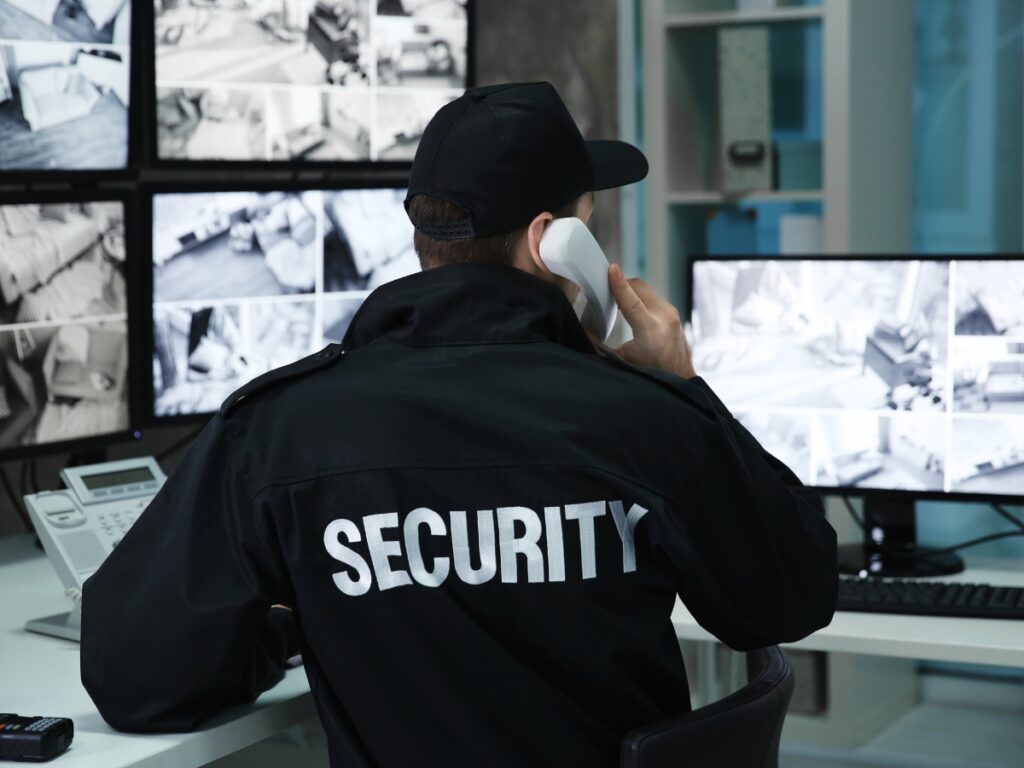
A well-executed retail security assessment is one of the most effective ways to prepare your business for the holiday season. Before the busiest weeks of the year begin, it helps you identify weak points in your current security setup and gives you a clear plan for addressing them. The goal is to spot potential problems before they become costly incidents. By mapping out high-risk areas, evaluating existing safety measures, and testing how well your team responds to potential threats, a thorough assessment builds a stronger foundation for holiday security overall.
This proactive approach ensures your store isn’t just reacting to theft when it happens. Instead, you’re preventing issues by tightening controls, improving visibility, and creating an environment where shoplifters are less likely to succeed. With a clear understanding of where your vulnerabilities lie, you can focus your time, attention, and budget on the areas that matter most.
What Does a Retail Security Assessment Include?
A complete security assessment looks closely at every part of your store’s safety plan. It begins with a detailed review of surveillance coverage to make sure cameras are positioned to capture key areas like entrances, exits, and high-value product sections. Lighting is another major focus, since poor visibility in corners or back aisles can make theft easier to conceal.
The assessment also evaluates point-of-sale procedures, ensuring cash handling, returns, and high-ticket transactions follow best practices. Staffing patterns are reviewed to see if certain times of day or specific zones are more vulnerable due to lower employee presence. External areas like parking lots and delivery entrances are examined as well, since they can be exploited by organized retail crime groups if overlooked.
At the end of the process, you receive a clear breakdown of vulnerabilities, ranked by how severe they are and how much financial risk they pose. This ranking helps you make strategic decisions about what to fix first and how to allocate resources effectively.
How Can Identifying Vulnerabilities Reduce Seasonal Theft?
Pinpointing weaknesses ahead of the holiday rush is one of the most cost-effective ways to strengthen your store’s defenses. Small issues, such as blind corners, poorly lit areas, or inconsistent staffing during peak hours, might seem minor on their own but can become major risks when traffic increases. By addressing these weak spots early, you can significantly cut down on opportunities for theft.
Even simple changes, like repositioning a camera, adjusting shift schedules, or moving high-value merchandise into a more visible location, can make a measurable difference. Stores that take this proactive approach often see a noticeable drop in theft incidents during the holiday season, along with improved confidence among staff and customers alike.
Ultimately, a thorough security assessment is more than just a seasonal precaution. It’s a strategic investment in your store’s long-term safety and success. By understanding and addressing vulnerabilities before the holiday rush, you can reduce losses, create a safer shopping environment, and maintain a stronger focus on what matters most: serving your customers during the busiest time of the year.
Why Should You Hire Professional Security Guards for Holiday Retail Protection?
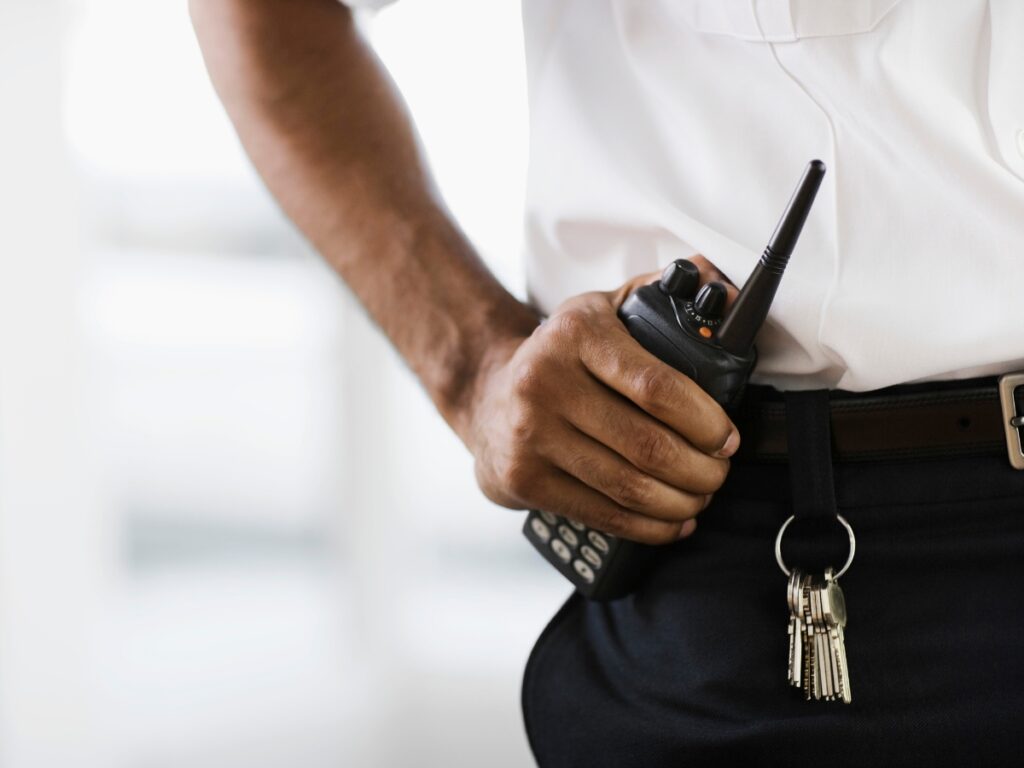
During the busy holiday season, retail theft risks rise sharply as stores become more crowded and staff are stretched thin. Having professional security guards on-site can make a significant difference in how well your store prevents and responds to incidents. These trained professionals do more than simply watch over merchandise. They understand how to manage large crowds, spot suspicious behavior before it escalates, and respond quickly when problems arise.
Professional guards also act as a visible deterrent. Potential thieves are less likely to attempt theft in a store where security is clearly present and alert. In addition, trained personnel know how to coordinate with local law enforcement when necessary, ensuring that any incidents are handled efficiently and with minimal disruption to the shopping environment. For stores focused on maintaining strong holiday security, having a reliable security presence is one of the most effective steps you can take.
What Are the Benefits of Armed vs. Unarmed Security Guards?
Choosing between armed and unarmed guards depends on your store’s specific risk level and the type of products you sell. Unarmed security guards are often the right choice for large retail spaces, shopping centers, and stores with high foot traffic. Their presence alone provides a strong deterrent, and their training allows them to de-escalate situations without creating unnecessary tension. They are particularly effective in family-focused environments where maintaining a welcoming atmosphere is essential.
Armed guards, on the other hand, may be more suitable for stores that handle high-value merchandise such as jewelry, luxury goods, or electronics. These locations face a higher risk of targeted theft, and the added authority and preparedness of an armed guard can help deter more serious criminal attempts. However, it’s important to ensure that armed security aligns with legal requirements and does not make customers feel uneasy. The decision should balance deterrence, safety, and the type of shopping experience you want to provide.
How Do Roving Patrols Enhance Holiday Store Security?
One of the most effective ways to strengthen holiday security is through the use of roving patrols. Unlike stationary guards, roving security officers move unpredictably throughout the store and surrounding areas, making it much harder for potential thieves to anticipate where they will be at any given time. This constant movement helps identify suspicious behavior early and prevents organized theft operations from establishing predictable patterns.
Roving patrols also reduce response times. Because these guards are already on the move, they can quickly reach an incident anywhere in the store, whether it’s a theft attempt, a customer conflict, or a safety concern. Their presence also reassures shoppers and employees alike, creating a safer and more comfortable environment during one of the busiest retail periods of the year.
Building a Stronger Security Strategy for the Holidays
Hiring professional security guards, whether armed, unarmed, or as part of a roving patrol, strengthens your store’s defense during the holiday rush. These professionals provide more than just eyes on the floor; they bring training, situational awareness, and quick decision-making that can prevent theft before it happens. By incorporating security personnel into your broader holiday security plan, you protect your inventory, safeguard your revenue, and create a shopping experience that feels secure and inviting for every customer who walks through your doors.
What Are the Key Tips for Managing Internal Theft and Employee Loss Prevention During the Holidays?
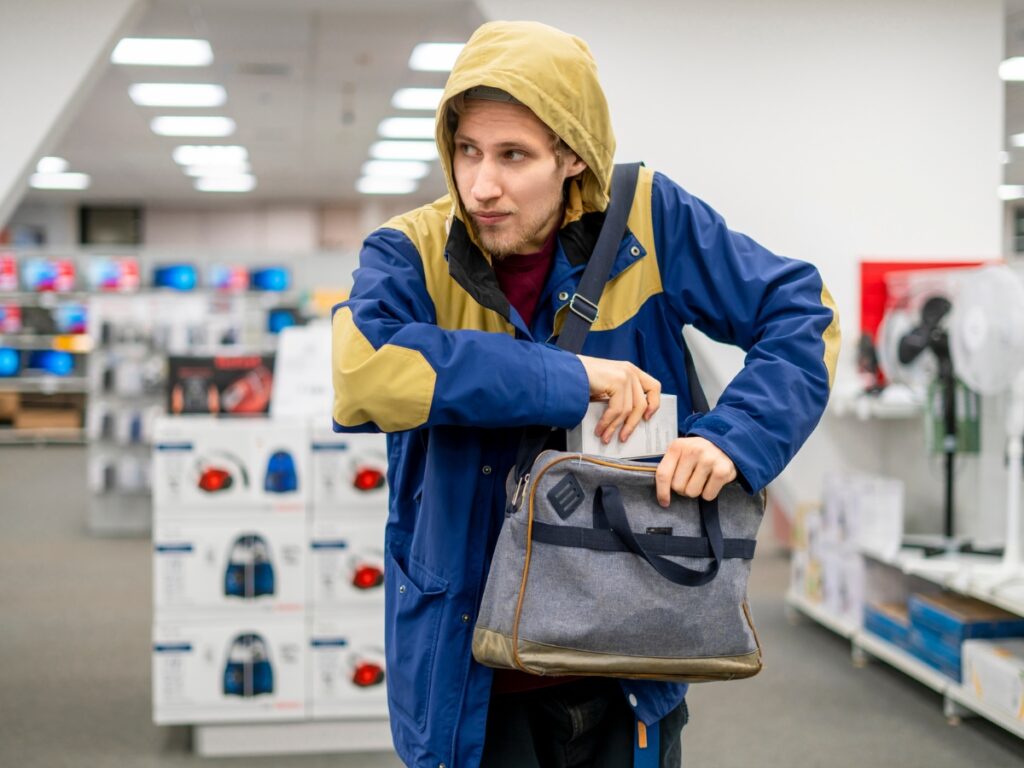
Strong holiday security isn’t just about deterring shoplifters. Internal theft can be just as costly, especially when seasonal staffing increases and store traffic surges. Managing this risk requires a focused approach that combines careful hiring, clear policies, consistent training, and ongoing oversight. By setting expectations early and following through with regular checks, you create an environment where accountability is part of the culture and opportunities for theft are minimized.
Thorough background checks and reference reviews are a smart first step, particularly for temporary hires brought on for the busy season. Clear policies that outline what is expected and what constitutes a violation leave less room for confusion or loopholes. When employees know that store leadership is attentive and systems are in place to track activity, the temptation to steal is significantly reduced.
How Can Employee Training Reduce Seasonal Theft?
Training plays a critical role in preventing internal theft, especially during the holiday rush when new and seasonal workers join the team. It’s important that training goes beyond basic job duties and covers specific security expectations. Employees should understand how to recognize suspicious behaviors, how to report concerns anonymously, and why ethical conduct matters to the success of the business.
Regular refresher sessions help keep theft prevention top of mind and ensure staff are aware of the latest tactics used by organized retail crime groups. These sessions also give management a chance to address real examples from previous seasons, reinforcing how policies are applied in practice. When employees feel informed, supported, and part of the solution, they are less likely to engage in misconduct and more likely to report it if they see it happening.
What Internal Controls Help Detect and Prevent Employee Theft?
Internal controls are the backbone of effective loss prevention. Simple but consistent practices can make a major difference. Randomized cash counts throughout the day discourage theft at the register because employees know discrepancies will be noticed quickly. Requiring dual approval for refunds, discounts, and voided transactions adds an extra layer of accountability and reduces opportunities for misuse.
Maintaining detailed digital logs of inventory adjustments is another essential safeguard. These records create a clear audit trail that can quickly highlight patterns of concern and speed up investigations if something goes missing. Monitoring these logs regularly and following up on irregularities sends a clear message that internal theft will not go unnoticed.
Building a Culture of Accountability During the Holidays
The holiday season is one of the busiest times of the year, but it’s also one of the riskiest when it comes to internal theft. A strong holiday security plan addresses this by combining preventive measures with a culture of trust and responsibility. When policies are clear, training is ongoing, and oversight is consistent, employees understand their role in protecting the business. By putting these practices in place well before the rush begins, retailers can reduce losses, protect profits, and maintain a safe, trustworthy environment for both employees and customers throughout the holiday season.
Conclusion
Don’t let seasonal theft dampen your holiday profits. Proactive security measures—from visible surveillance to trained personnel—are essential for protecting your inventory, revenue, and peace of mind during the busiest shopping season. At 4Horsemen Investigation & Security, we provide customized security solutions designed to deter theft and ensure a safe environment for your customers and staff. Secure your store today: Call 404-680-0860 or visit our website for a free consultation. Let us help you safeguard your success this holiday season and beyond.


